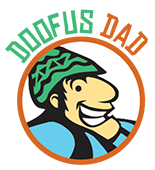
At Crossfit Rutherford in Murfreesboro, Tenn., Erin Snellgrove (foreground) and box-mates perform deadlifts during a WOD (workout of the day).
Let’s be honest. To much of the athletic world, deadlifts are the Rodney Dangerfield of bar movements.
They are unglamorous. They aren’t particularly dramatic to the untrained eye. They seem rather brutish and utilitarian.
Perhaps worst of all, deadlifts invoke the stereotypical image of the enormous, hairy, pasty, uber-perspiring, 1970s-era Soviet-block power-lifter, resplendent in his chalk-whitened unitard as he pulls roughly a zillion kilos.
It’s time to set the record straight: That was your dad’s deadlift.
While it’s true that the movement is a staple in the world of powerlifting, the deadlift should also be a vital component of any cross-training program. Jennifer Haynes, who, with her husband, Chris, owns Crossfit Rutherford in Murfreesboro, Tenn., says that only the squat rivals the deadlift as the most effective and functional movement used in Crossfitworkouts.
“Crossfit is all about functional movements, and there is nothing more functional than deadlifting,” says Haynes. “Back injuries are one of the most common physical complaints in our country, and that’s largely because most people haven’t been trained how to properly lift a heavy object from the ground. Deadlifts have more real-world application than any other thing you can do with a bar.”
Crossfit founder Greg Glassman says that although the deadlift is either ignored or unknown by a large segment of the fitness community, it may possibly be the most universally beneficial movement.
“Regardless of whether your fitness goals are to “rev up” your metabolism, increase strength or lean body mass, rehabilitate your back, improve athletic performance, or maintain functional independence as a senior, the deadlift is a market shortcut to that end,” says Glassman. “The deadlift, being no more than picking a thing off the ground, keeps company with standing, running, jumping, and throwing for functionality but imparts quick and prominent athletic advantage like no other exercise.”
So let’s boil this down a little bit. Here are the top 11 reasons why you should give the deadlift a place of honor in your cross-training program.
 |
| The erector spinae muscle group. |
- It mimics real life. Deadlifting is practicing the everyday function of raising an object up from the ground. It’s not about weight — it’s about form.
- It’s a full-body exercise. This movement strengthens all the major muscle groups in one fell swoop.
- It’s great for rehabilitating a weak back. The deadlift activates the core muscles of the lower back (erectors) as well as the latissimus dorsi (lats) at the top of the movement. In strengthening the complicated group of muscles that support the spine, there is less chance for disc injury related to movement (as opposed to heredity or some other medical factor). This will also result in less lower back weakness and pain during distance running.
- It results in fast lean muscle gains. Because it activates a wide range of muscle groups, the deadlift forces the whole body to grow. As a result, there is also a greater release of growth hormone.
- Minimum equipment is required. A bar and some weights — it doesn’t get any simpler than that.
- It’s a surprisingly low-risk bar exercise. Like with any exercise, you can hurt yourself doing a deadlift, especially if you’re trying to pull too much weight. However, there is no chance in being pinned by the bar (see: benchpress) with a deadlift. Can’t complete the movement? Drop the bar.
- The deadlift develops gripping strength. Because you are likely moving more weight than with any other lift and the bar is supported by the fingers, deadlifting will increase gripping power like nobody’s business. This is a nice benefit to many other athletic pursuits.
- It’s a great cardio exercise! At first glance, that sounds counterintuitive, I know, but remember, this is cross-training we’re talking about, not power-lifting. Lower weight and higher reps during interval-type training will absolutely tax your cardio system — try it and see.
- Gateway to other lifts. The deadlift is the initial movement of both the snatch and the clean and jerk. Proper deadlifting will obviously give you a better chance at success with these lifts.
- Want buns of steel? Then the deadlift is your best friend. On ascension of the weight, the gluteus muscles are highly involved. With enough time, deadlifts will create the rounded booty most ladies crave and men admire.
- Develops core strength critical to mobility in seniors. Again, we’re talking functional movements here, not Volkswagen Beetle lifts during a strongman competition. A person with strong posterior chain muscles — biceps femoris, gluteus maximus, erector spinae muscle group, trapezius, and posterior deltoids — is much, much less likely to have mobility problems later in life.
As with any program involving weights, be sure to consult with your doctor and a fitness professional before incorporating heavy lifting into your daily workout.

Trackbacks & Pingbacks
[…] Don’t be intimidated by the big dogs. You’re not expected to do what they’re doing. Your trainer will scale the exercise for you. That way, you’re getting the same benefits that the big dogs are getting. This is what makes Crossfit doable for anybody. (Check out “The Top 11 Reasons to Deadlift in Crosstraining.“) […]
Leave a Reply
Want to join the discussion?Feel free to contribute!